planets
Latest
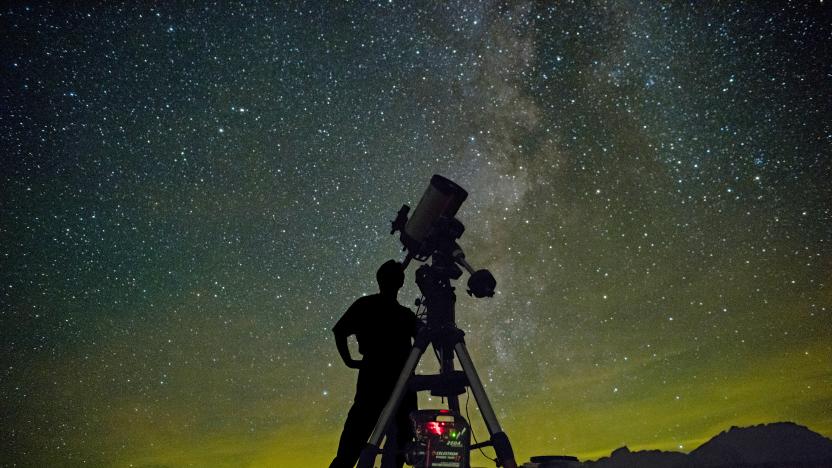
How to see five planets aligned in the night sky this week
If you want to catch a (somewhat) rare planetary alignment in the night sky, find a clear area without much light pollution and set your gaze to the west right after sunset this evening. There, you’ll see five of our neighbors — Mercury, Venus, Mars, Jupiter and Uranus — lined up in an orderly spread.
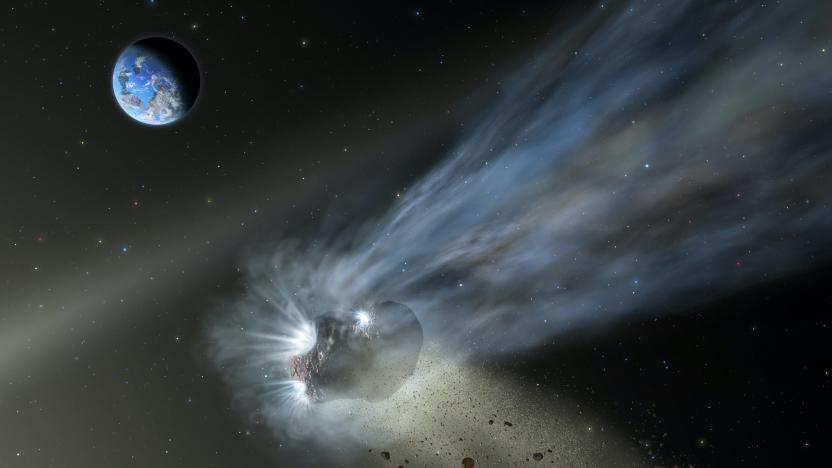
Comets may have seeded Earth with life-supporting carbon
A snapshot of a comet carrying carbon as it zipped past Earth in 2016 is helping NASA learn more about the origins of life.
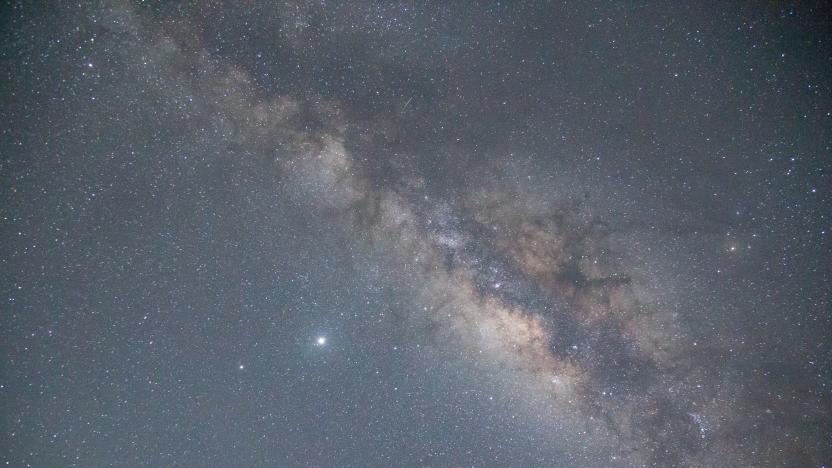
Scientists found an Earth-sized ‘rogue’ planet in the Milky Way
Scientists have discovered what they say could be the smallest free-floating planet ever detected.
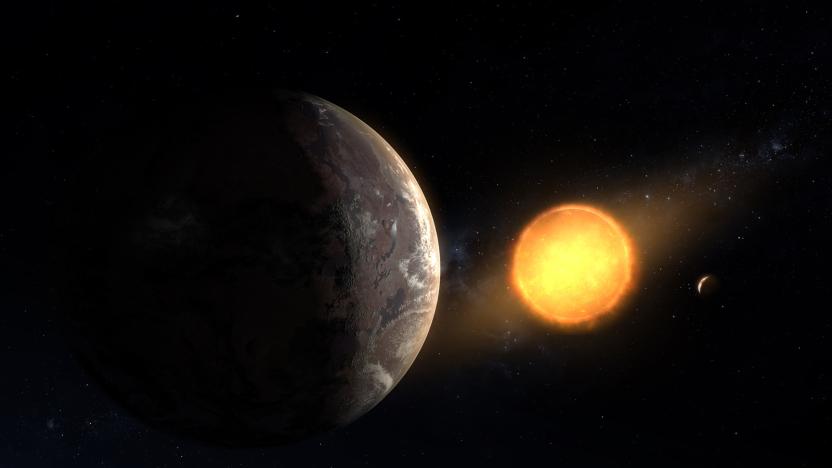
Scientists find an Earth-like planet hiding in old Kepler data
The newly discovered Kepler-1649c is a close parallel to Earth, but whether or not it supports life is another story.

BepiColombo orbiters take off for Mercury tonight
If you've ever wondered what's happening over on Mercury, you'll have an answer soon. Well, soon-ish. BepiColombo, a joint effort between the space agencies of Europe and Japan, will send off a spacecraft Friday night at about 9:45 PM ET with the destination set for the closest rock to the sun. Don't expect to hear much from the little adventurer for a while, though -- it won't reach Mercury's orbit until late 2025.
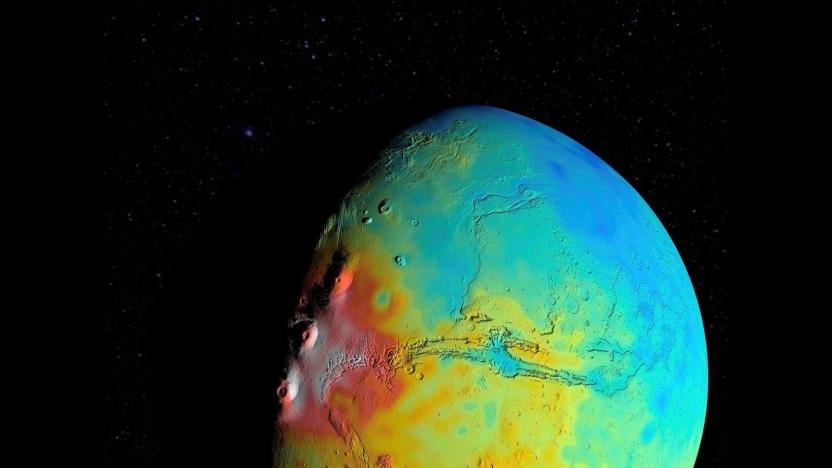
Mars has a less dense crust than astronomers thought
Understanding the crust of a planet provides important information about the planet's history and its interior structure. But getting details about the crust of another planet -- like its thickness and density, for instance -- is no simple task. However, NASA researchers have developed a new way of analyzing the crusts of our solar system brethren that allows for more accurate estimates based on less information.
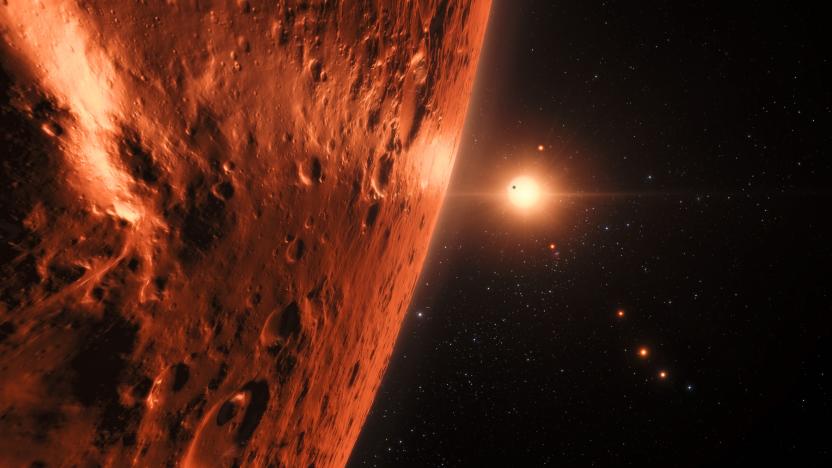
Hubble telescope spots evidence of water on Trappist-1 planets
Scientists say it's possible five Earth-sized planets orbiting Trappist-1, an ultra-cool dwarf star located 39 light years away, contain "significant amounts of water." An international team of astronomers used the Hubble Space Telescope (HST) to measure the amount of ultraviolet (UV) radiation hitting all seven Trappist-1 exoplanets. The phenomenon is important because low-energy UV radiation can break down water molecules into hydrogen and oxygen; higher levels heat the upper atmosphere to the point where the two elements can escape. UV radiation is therefore useful in modelling water loss and atmospheric stability in distant planets.
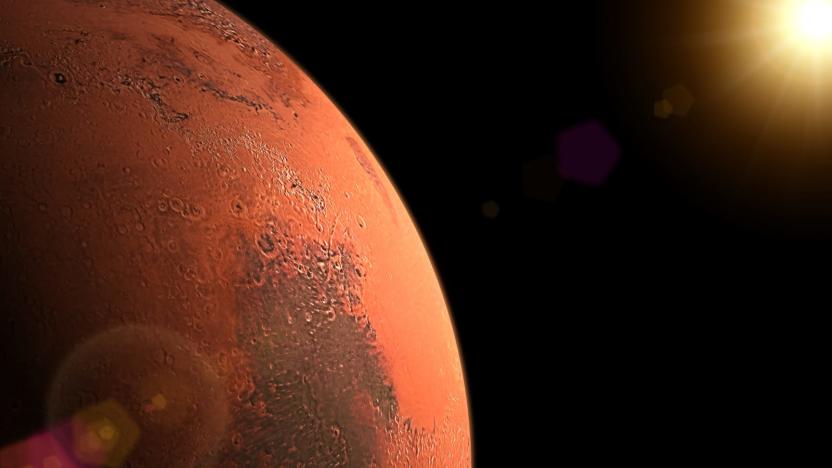
Optical laser uses shockwaves to peer inside distant planets
Scientists at SLAC's National Accelerator Laboratory are able to peer even further into space thanks to an improved optical laser. The laser uses shockwaves to create high pressure conditions in materials, and the material's response is then captured by an ultra-bright X-ray laser, revealing what's going on inside planets and meteors. Upgrades to the optical laser means it's now three times more powerful, with the equivalent power of 17 Teslas discharging their 100 kilowatt-hour batteries in a single second.
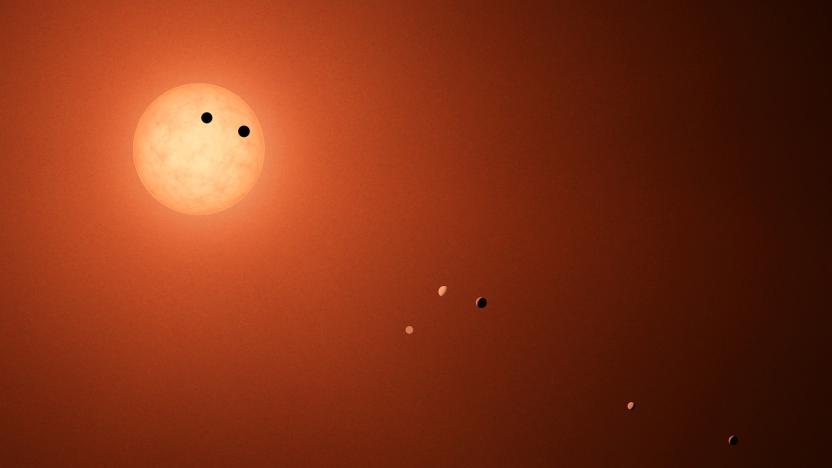
Trappist-1 planets may have formed from chunks of melting ice
After its discovery, Trappist-1 instantly became one of the most interesting stars in the Milky Way, with seven Earth-sized planets including three in the life-supporting "habitable zone." But, why did the planets form in such uniform Earth-like sizes so close to their star? Astronomers from the University of Amsterdam believe everything can be explained by small chunks of ice that clustered in the region where water just starts to freeze. Eventually, enough chunks clotted together like plasticine, forming worlds just inside the "ice zone" -- the perfect spot for life.

The search for a habitable second Earth
Contact with extraterrestrial life would be an epochal event. Even the discovery of a simple alien organism would be transformative, giving us unprecedented insight into how life forms on Earth and other planets. Yet, there's exactly zero proof that life exists beyond this world -- not one alien germ, spore or cell, let alone an advanced race that could save or enslave us. And we don't even know how life sprung up here 4 billion years ago from rocks, mud and water.

ICYMI: A prosthetic hand with two senses
Today on In Case You Missed It: We get our first close-up look at Saturn's rings thanks to the Cassini spacecraft -- which just completed the first of its twenty-two passes through the planets' famed hoops. NASA stitched together the images from the craft to give us Earthlings an incredible first-person (first-spacecraft?) point-of-view of the recent dive, which began at the north pole of the planet and moved down its side. The imaging team working on Cassini's trips expects to get even better data from the subsequent trips, which will gather information on Saturn's gravity and magnetic fields.
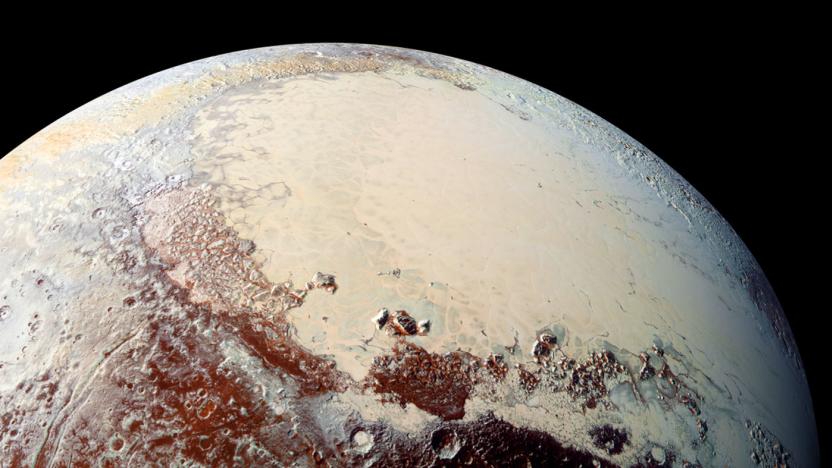
New Horizons scientists want to redefine what planets are
Alan Stern and his fellow New Horizons scientists really want Pluto to become a full-fledged planet again. The principal investigator of NASA's mission to Pluto, along with a few members of his team, want to change the definition of planets. According to the proposal they intend to present at the Lunar and Planetary Science Conference, they want the word "planet" to define any "sub-stellar mass body that has never undergone nuclear fusion and that has sufficient self-gravitation to assume a spheroidal shape adequately described by a triaxial ellipsoid regardless of its orbital parameters." In simpler words, they want the word planet to describe all "round objects in space that are smaller than stars."

NASA is crowdsourcing the search for exoplanets
To those of you who dream of going to space: Sorry, but that may never happen. However, NASA is once again counting on the public for help understanding what's beyond our world. All we have to do is look at some photos online. Today marks the launch of Backyard Worlds: Planet 9, a project that relies on everyday people to help scientists identify objects near our solar system. These celestial bodies appear to move across the sky, but computers have a hard time finding things like brown dwarfs and planets in the noisy images. This means manually searching the photos is the most effective method to get the job done.
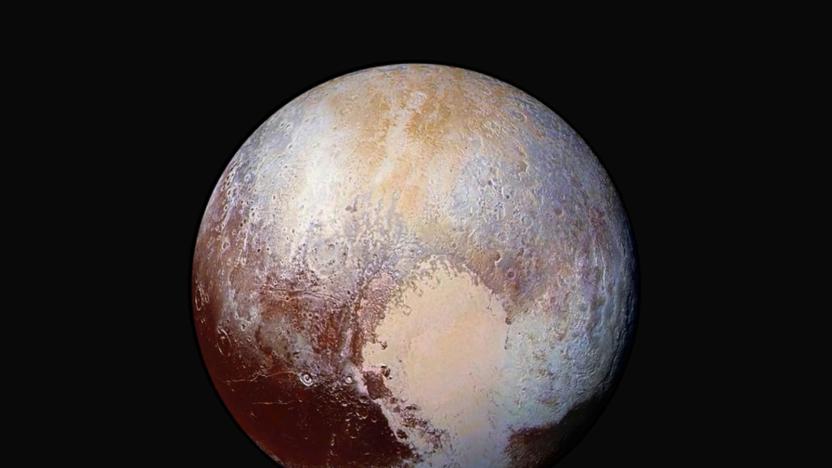
Researchers offer new evidence of a liquid ocean on Pluto
Pluto may have lost its official planet status, but the frozen world at the edge of our solar system still deserves a closer look. That's the end goal of two new studies of Pluto published in the journal Nature this month, both of which focus on Sputnik Planitia -- a 1,000-kilometer long basin covered in frozen nitrogen. As Wired notes, both papers agree that Sputnik Planitia's mass is likely responsible for throwing Pluto off its axis and creating Charon's tidal alignment, but they differ in their explanations of how a dent in the planet's surface could actually be so massive.
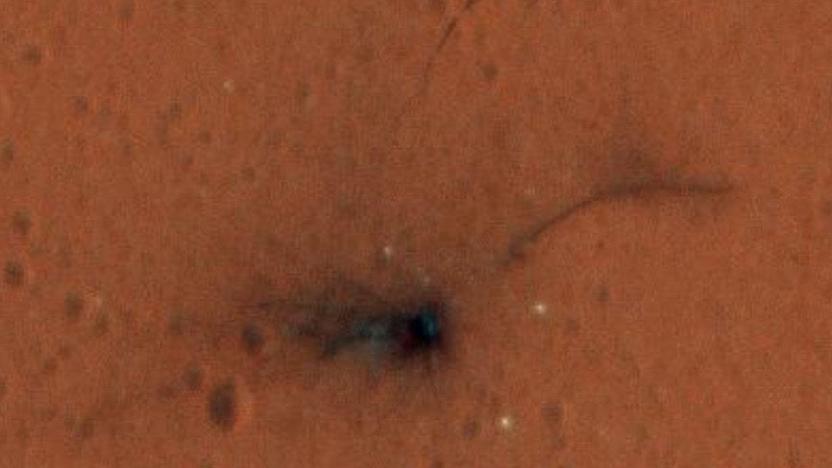
ESA releases first color photos of the EXOMARS crash site
The ESA's EXOMARS Schiaparelli lander crashed into the Red Planet's crust at more than 300 kph on October 19th, marking not only the end of its mission but also the surface itself. NASA's Mars Reconnaissance Orbiter (MRO) spotted the impact site quickly afterward but it wasn't until this week that its orbit brought the MRO back around. Using its High Resolution Imaging Science Experiment (HiRISE) camera, the MRO snapped the shot you see above.

After Math: Only the essentials
It was a pretty kick-ass week in terms of interplanetary exploration -- and not even just in NMS. Astronomers found a potentially habitable planet just 4.2 light years from us! This could be our first stop beyond Mars but it's going to take a while to get there, so we're going to have to travel light. That means bringing nothing but the most essential of supplies -- like scouter drones, custom-designed hazmat suits, efficient solar power generators and 8K televisions. Numbers, because how else are you going to calculate the interstellar rocket's payload fraction?

A third of the world can no longer see the Milky Way
If you never thought light pollution was a problem before, think again. New research claims that more than a third of humanity cannot see the Milky Way anymore, because artificial lights have made the night sky too bright to view the galaxy.

Astronomers may have found the Solar System's 9th planet
Astronomers from the California Institute of Technology (CIT) announced on Wednesday that they have found evidence to suggest that our solar system does indeed have a ninth planet -- a rather enormous one at that. This as-of-yet unnamed planet, which is being referred to as "Planet Nine" for the time being, is thought to be between five and ten times the size of the Earth and orbits so far beyond Pluto that it circles the sun just once every 10,000 to 20,000 years.

See what every star system Kepler's found looks like compared to ours
Since its launch in 2009, the Kepler spacecraft has discovered more than 1700 planets in some 685 star systems. This slick animation from YouTuber Ethan Kruse shows every one of them with their orbits synchronized and drawn to scale. The planets themselves aren't exactly to spec -- I mean, just look at how small Jupiter is -- but that's only so that the smaller exoplanets aren't completely crowded out. Kruse reportedly employed the open source Kepler Orrery code to create the animation.

NASA discovers a 'close cousin' of Earth around a sun-like star
Talk about plucking a needle from a cosmic haystack. NASA just announced that its planet-hunting Kepler telescope has discovered Kepler 452b, an exoplanet that exists inside the habitable zone around a G-type star (that is, a star that's awfully similar to our own sun). The planet is about 60 percent more massive than Earth, and that's a pretty good sign -- researchers obviously aren't sure whether the Kepler 452b can support life, but the chances of it having a solid, rocky surface are "better than even."














